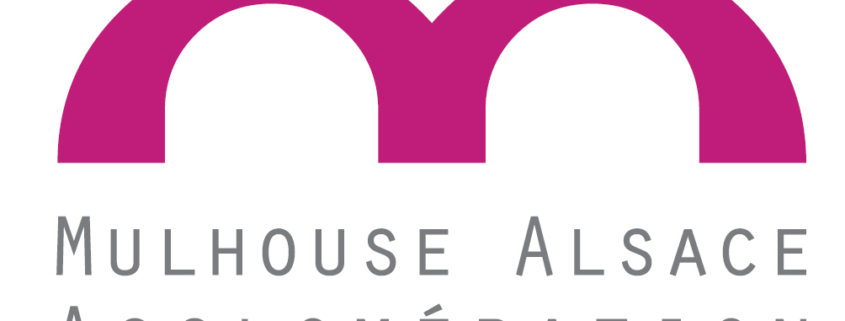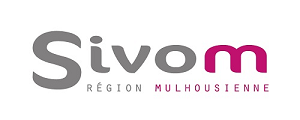Tracking PTO accrual can be a helpful reminder to employees that their work directly contributes to earning well-deserved time off. Rather than keeping the calculations mysterious, both employees and employers should understand how these hours add up. This helps everyone stay on the same page, eliminates the need for manual calculations, and provides employees peace of mind that their time is properly tracked. For example, an employee with an accrual rate of 0.05 per accrual period of an hour would need 20 hours on the job to earn one hour of PTO. The average PTO accrual rate per hour ranges between 0.03 to 0.06 hours. This means that a full-time worker who works 40 hours every week would earn around 1.25 to 2.5 days of PTO every month.
Simple Time Duration Calculator: Track Time Off Accurately
Blackout periods refer to specific times of the year when employees are restricted from taking PTO due to high business demands, critical projects, or other reasons. During these periods, the company may require employees to prioritize work commitments over personal time off. This accrual rate is based on an 8-hour workday and 40-hour workweek. To determine the accrual rate, specify the rate at which PTO is earned, such as 1.5 hours per 40 hours worked. Weekly accrual frequency is a popular option for employees who work a standard five-day, 40-hour workweek.
Which employees earn PTO
Even if a company administers PTO per hours worked, these policies may apply to salaried workers. In this case, the policy should be written to explicitly describe that employees who work 40 hours per week accrue PTO based on that fixed unit of measurement. For operational reasons, companies may not want employees to be unavailable for long periods of time.
Step 1: Determine Annual PTO
Similarly, a full-time employee working 40 hours a week will accrue 3.08 hours of PTO each week (40 x 0.077). His contract provides him with 20 days of PTO at an annual accrual rate. This guide offers a clear, practical approach to calculating your PTO accrual. However, for employers, implementing these laws might be difficult, especially for organizations whose employees are scattered within different states.
The accrual method specifies the system or structure used to accumulate PTO, such as hourly, daily, or weekly accruals. In contrast, the accrual rate is the actual rate at which PTO is earned within that system. Despite these differences, both concepts work together to ensure employees earn their PTO in a fair and systematic manner, supporting a balanced approach to work and personal time. Full-time employees typically accrue PTO at a different rate compared to part-time or seasonal employees, reflecting the differences in their work hours and responsibilities. This variability ensures a fair distribution of paid time off, recognizing the unique contributions and needs of each employee.
This allows leaders to balance employee satisfaction with operational efficiency. Finally, industry norms and competitive practices influence accrual rates. Companies often benchmark PTO policies against competitors to remain attractive to top talent. Industries like tech or finance may offer higher PTO accrual or unlimited PTO programs, while retail and service sectors might offer accrual tied strictly to hours worked. Through accrual, employees gradually accumulate PTO based on their hours worked or employment tenure.
- Most states allow employers to set accrual caps, which limits the total PTO an employee can accumulate.
- Some companies offer separate banks for vacation and sick time, while others combine them under a unified PTO policy.
- You may know how many organizations calculate PTO, but that doesn’t mean the most common method is inherently better.
- To determine the structure of your policy, decide whether employees will accrue PTO over time or receive a lump sum at the beginning of the year.
Personal Time Off (PTO): Policies, Benefits, and Best Practices
The bi-weekly accrual rate method is popular because it aligns with payroll schedules, especially for companies that pay their employees every two weeks. This method allows employees to accrue PTO consistently with each paycheck, simplifying PTO tracking for both employees and HR. Calculating the PTO accrual rate involves applying specific formulas based on the company’s chosen method and information gathered from the policy.
This goes a long way in explaining why PTO policies are particularly critical to employee satisfaction and retention. However, average pto accrual rate it’s important to have a tracking system in place to monitor the number of days each employee uses. This helps you see how well your PTO policy works and make changes as required.
- You can edit leave balances, reassign team roles, or adjust leave policies without digging through layers of settings.
- Some offer more vacation or sick days to attract and keep employees, while others give less.
- That said, once an employee accumulates a week’s worth of hours (e.g., 40), the math is very similar to the daily calculation.
- It’s a win-win for everyone involved, and it ultimately contributes to a smoother, more productive work environment.
- The first step in implementing a paid-time-off policy is to decide how much time you will offer.
Companies usually provide more PTO days to full-time workers, but the accrual amounts and frequencies can vary. For part-time employees, it makes sense to create different accrual amounts and frequencies, such as making their accrual rate per hour worked. The IRS defines a full-time employee as someone who works for a company, on average, at least 30 hours per week each month.
Ultimately, it’s not just about how much time off is offered, it’s about how effectively it’s used. Offering a competitive average PTO days per year improves recruitment, retention, and morale. Ignored PTO, on the other hand, can lead to disengagement, reduced performance, and growing liability. To address this, some companies are blending flexibility with structure. For example, Olipop mandates at least one week off in summer and offers a $1,000 stipend to encourage real disconnection, even within an unlimited PTO model.
Since she has reached the accrual cap, she must utilize some of her accrued PTO before she can accumulate more. This means she will have to take some paid time off – and this encourages people to relax and take care of their personal needs. PTO accrual caps and limits refer to the maximum amount of paid time off that employees can accumulate. While there’s no one-size-fits-all number, many competitive companies offer between 15–20 days of PTO annually, plus holidays. What matters more than the number is a culture that encourages employees to take full advantage of their time off without guilt or disruption. For distributed or remote teams, a good PTO policy should emphasize flexibility, time zone fairness, and clear expectations.
The Ultimate Vacation Tracker Guide
As a small business owner, it may be critical to your business to have a documented and competitive PTO plan. But what makes a PTO plan competitive in small business these days? The first step in implementing a paid-time-off policy is to decide how much time you will offer.
M2A et les Centres d’Initiation à la Nature et à l’Environnement, le Moulin Nature et la Petite Camargue Alsacienne éditent un programme « La nature près de chez moi » avec de nombreuses animations gratuites pour découvrir les espaces naturels du territoire en famille de mi-avril à octobre 2023.
La nature près de chez nous…#2
De mi-avril à octobre 2023, des sorties « Nature » sont proposées gratuitement sur l’ensemble du territoire de Mulhouse Alsace Agglomération (m2A)
En compagnie d’un animateur professionnel, ces évasions bucoliques s’adressent à tous les publics, enfants, adolescents, adultes, familles…
Si vous êtes prêts à tremper vos pieds dans un cours d’eau, à écouter les oiseaux chanter, à vous balader et même à monter sur un arbre, dans les nombreux parcs et jardins de m2A, de façon ludique et curieuse, entre fleurs, rivières, faune…
… ou sous les étoiles, inscrivez-vous, cliquant sur le lien ci-dessous !
https://mag.mulhouse-alsace.fr/la-nature-pres-de-chez-moi-des-sorties-sur-tout-le-territoire/
Le bac vert sert permet d’évacuer les déchets suivants…

Mode d’emploi des déchets verts, faisons le bon geste tri

Ne sont pas admis dans les bacs de collecte
How to Create an Aging Report in Excel
This advance warning allows you to take preventive measures, such as adjusting credit terms or initiating collection actions, to mitigate potential losses. Early detection and proactive management of bad debt can safeguard your business’s financial health. Traditionally, AR managers have avoided creating these reports due to their time-consuming manual nature, which involves reconciling customer payments with invoices and tracking overdue payments.
- Financial software can expedite this process, pulling data directly from your accounting system.
- In other words, if you have multiple pending invoices for Company X, then you can group these invoices together for now, though you’ll organize them by the due date in the next step.
- Let’s say John Melton’s $450 balance is all on one invoice, and that invoice was due on January 25, 2020.
- All amounts in the aging receivable report are prepared based on some of the amounts invoiced to customers.
Using AR Aging Reports to Improve Collections
- In financial management, accurately estimating bad debts is crucial for maintaining a company’s financial health and ensuring realistic projections of future cash flows.
- Aging of accounts receivable is the process of categorizing unpaid invoices based on how long they have been outstanding.
- Even if you are a cash basis taxpayer, if you extend credit to your customers, you should run your business’s financials on an accrual basis in order to get your company’s full financial picture.
- For example, with Maxo, you can access all your unpaid invoice data in one place with the relevant dates.
- The number of days becomes your accounts receivable aging, and this information is summarized on the accounts receivable aging report.
They can also identify patterns in payment behavior and predict future cash inflows more accurately by analyzing aging reports. This information allows businesses to better manage cash flow and plan expenditures, investments, and operational activities accordingly. By clearly understanding the expected cash inflows, an accounting department can mitigate potential gaps and make informed decisions to avoid liquidity issues. Accounts receivable aging has columns that are separated into 30 day increments. This represents the total receivables that are currently due for each customer as well as those that are past due for each 30-day time period. Dale’s Shipping & Logistics has a total of $80,000 past due from its customers.
#1 Identify and prioritize overdue invoices
Accounts receivable — sometimes called simply “receivables” or A/R — are funds due to you from customers for products or services you have already delivered to them. If your business invoices customers and allows them to pay at a later time, then you have accounts receivable. The aging report helps you see who’s paying on time and who’s falling behind, giving you a clear picture of your cash flow and collections efforts. If you’re just learning how to calculate accounts receivable, aging reports are a good place to start—they give you the data you need to measure how efficiently you’re collecting payments.
How to prepare accounts receivable aging reports
Whether you’re handling customer payments, tracking vendor invoices, or building a receivables aging report, this tutorial is for you. Moreover, by identifying patterns of late or non-payments, companies can refine their customer credit policies and strengthen their risk management strategies. This proactive credit management approach helps how to use an accounts receivable aging report safeguard the company’s receivables and ensures a healthier cash flow.
Credit Risk Assessment
By monitoring the age of receivables, businesses can identify trends and take proactive measures to reduce the duration of outstanding invoices. This report also aids in the calculation of debts allowance, ensuring that the financial statements reflect the true value of receivables. Effective use of the accounts receivable aging report can enhance bookkeeping automation, streamline workflows, and ultimately improve the overall financial management of the business.
This will provide a clear overview of each customer’s outstanding balance and payment history. We’ve created this guide to help you better understand the accounts receivable aging report. We’ll go over what this report is, why it’s important, what it contains, and how to prepare it.
AR aging reports show which accounts are late, for which invoices, and for how long they’ve been overdue. Every unpaid invoice, alongside complete customer and account details, should be listed in aging reports, illustrating how healthy—or unhealthy—your receivables and cash flow are. Accounts receivable is an accrual basis accounting term, and the total of your accounts receivable will appear on your company’s balance sheet.
This prioritization is essential for effective collection management, enabling companies to allocate resources efficiently. An Accounts Receivable (AR) Aging Report is a crucial financial tool that categorizes a company’s outstanding invoices based on their due time. This report is typically segmented into various time frames, such as 0-30 days, days, days, and over 90 days. Providing a clear overview of receivables assists businesses in assessing their financial health and managing cash flow effectively.
Impact of AR Aging Reports on Cash Flow Management
If you extend credit to your customers, managing your accounts receivable is one of the most important accounting functions in your business. Without proper management, your accounts receivable can get out of control, causing significant cash flow problems for your business. An AR aging report helps you stay on top of your receivables, analyze whether your customers are paying on time, calculate credit risks to your business, and estimate bad debts. Whether it’s your finance team, a dedicated AR team, or even external shareholders like lenders, investors, and tax authorities, this report helps keep everyone on the same page. Comprehending cash flow is essential for enterprises navigating the complexities of the contemporary financial landscape.
Understanding these elements helps maintain robust financial health and customer relations. Mitigate credit risk, reduce bad debt, and streamline customer onboarding with AI-powered insights. Accelerate payment recovery from delinquent customers and boost cash flow through automated collection workflows. However, it may surprise you to know that 68% of companies receive more than half of their payments after the due date, which often leads to cash flow problems.



